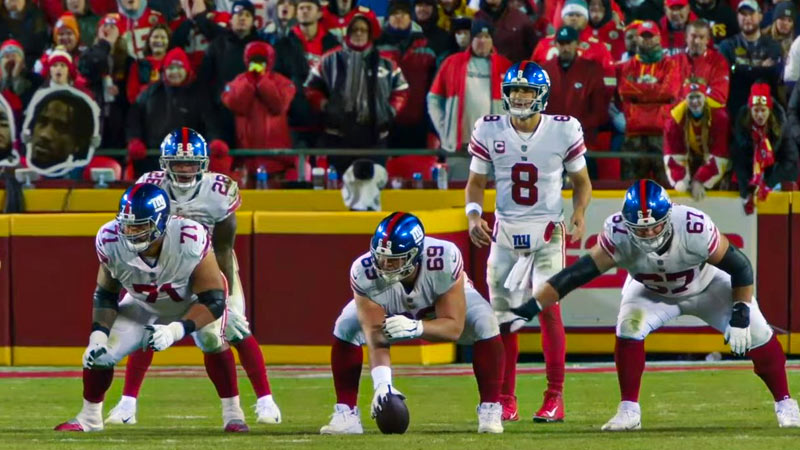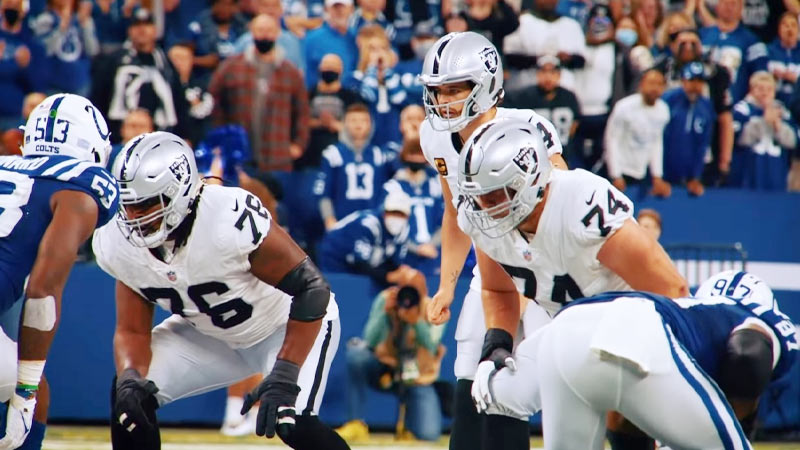In the fast-paced world of the National Football League (NFL), roster management is a constant chess game. One of the critical moves in this game is understanding and effectively utilizing the NFL waiver wire.
This blog post on Football NFL Waivers will delve into the intricacies of the NFL’s waiver system into how teams can strategically build and adjust their rosters throughout the season.
From positional needs and prospecting young talent to salary cap management and scouting analytics, we’ll explore the diverse strategies employed by NFL teams to gain a competitive edge through the waiver wire.
Whether you’re a die-hard football fan or a fantasy football enthusiast looking to gain a deeper understanding of NFL roster dynamics, this post will shed light on the often-overlooked but vital aspect of NFL player transactions. Stay sharp.
What Is Football NFL Waivers?
NFL waivers is a system used in the National Football League (NFL) to manage player transactions. When an NFL team wants to release a player from its roster, that player is placed on waivers.
During the waiver period, which typically lasts 24 hours, other NFL teams have the opportunity to claim the player and add them to their roster.
The waiver order is usually determined by the reverse order of the current standings, with the team with the worst record having the highest priority.
If multiple teams submit claims for the same player, the team with the highest waiver priority is awarded the player. Waivers are often used when teams want to release a player but don’t want to risk them becoming a free agent immediately.
It allows for a more orderly process of player movement and gives teams an opportunity to acquire talent from the waiver wire. It’s an important mechanism for maintaining competitive balance in the NFL.
How Do Football NFL Waivers Work?

NFL waivers work as a system to manage player transactions and maintain a competitive balance in the National Football League (NFL). Here’s how they work:
Player Release
When an NFL team decides to release a player from its roster, that player is placed on waivers. This typically occurs when a team wants to part ways with a player before their contract expires or to make room for another player on the roster.
Waiver Period
Once a player is placed on waivers, there is a specified waiver period during which other NFL teams can submit claims to acquire that player. The waiver period usually lasts 24 hours.
Priority Order
The order in which teams are allowed to make waiver claims is often determined by the reverse order of the current NFL standings. In other words, the team with the worst record gets the highest priority on the waiver wire, while the team with the best record has the lowest priority.
Claiming Players
Teams interested in claiming a player off waivers must submit a claim during the waiver period. If multiple teams submit claims for the same player, the team with the highest waiver priority is awarded the player.
Player Movement
If a team is awarded a player through the waiver system, they assume the player’s current contract and roster spot. If no team claims the player during the waiver period, the player becomes a free agent and is free to sign with any team.
Priority Reset
After a team successfully claims a player off waivers, their waiver priority is often reset to the lowest ranking, allowing other teams with higher priorities to have a better chance at claiming players in subsequent waiver transactions.
Football NFL waivers provide a structured process for player movement, allowing teams to make roster changes while giving other teams a fair opportunity to acquire available talent.
Common Waiver Transactions in NFL

In the NFL, waiver transactions are common throughout the season as teams make roster adjustments and seek to acquire or release players. Here are some common waiver transactions:
Player Releases
Teams frequently release players from their roster for various reasons, such as poor performance, injuries, or the need for salary cap flexibility. When a player is released, they are placed on waivers.
Waiver Claims
Teams can submit claims to acquire players who have been waived by other teams. This is often used to bolster specific positions or address immediate needs. The team with the highest waiver priority is awarded the player if multiple teams submit claims.
Injury Settlements
When a player is injured and unlikely to return to the field for an extended period, teams may negotiate an injury settlement with the player. Once the settlement is reached, the player is released and becomes a free agent.
Practice Squad Transactions
Practice squad players are subject to waivers as well. Teams can claim players from other team’s practice squads to add them to their own. These claims follow a different set of rules than standard waivers.
Veteran Salary Benefit Waivers
This mechanism allows teams to release a veteran player without exposing them to waivers. It’s often used to give veteran players an opportunity to find a new team without going through the full waiver process.
Non-Football Injury Waivers
If a player is unable to perform due to a non-football-related injury, they can be placed on waivers. This often happens when players are involved in off-field incidents or accidents.
Waiver Priority Trades
Some teams may trade their waiver priority to another team in exchange for a player or other assets. This can be used strategically to move up in the waiver order.
Clearing Waivers
If a player goes unclaimed during the waiver period, they become a free agent and are free to sign with any NFL team. These common waiver transactions allow teams to manage their rosters effectively, address their needs, and make necessary adjustments throughout the NFL season.
Impact of NFL Waivers on Team Rosters

NFL waivers have a significant impact on team rosters and are a crucial aspect of how teams manage their player personnel throughout the season.
Here are some key ways in which NFL waivers affect team rosters:
Roster Flexibility
Waivers allow teams to make changes to their roster quickly. When a player is released, they are subject to waivers, which provides the team with the flexibility to add new players or make room for emerging talent.
Player Acquisition
Teams can acquire talent from other teams’ rosters through waiver claims. This is especially important when a team has a need at a particular position due to injuries, underperformance, or other factors.
Waiver claims offer a way to address these needs without going through the free agency process.
Competition for Talent
The waiver system creates competition among teams for available players. When a player of interest is placed on waivers, multiple teams may submit claims, and the team with the highest waiver priority is awarded the player. This competitive aspect ensures that talent is distributed fairly across the league.
Roster Churn
Teams use waivers to fine-tune their rosters throughout the season. They can release players who are no longer contributing or are injured and replace them with new additions who better fit their current needs.
Development and Evaluation
Young or unproven players often go through the waiver system when they are released by one team but have the potential to be picked up by another. This gives them an opportunity to continue their NFL careers and allows teams to evaluate their potential.
Salary Cap Management
Teams may use waivers strategically to manage their salary cap situation. Releasing high-salaried players with guaranteed money can lead to cap savings, even if the player is claimed by another team.
Roster Depth
Waivers help teams maintain depth on their rosters. Injuries are common in the NFL, and waivers provide a means to replace injured players quickly and ensure there are backup options available.
Competitive Balance
The waiver system is designed to promote competitive balance in the league by giving priority to teams with poorer records. This helps weaker teams acquire talent more easily, making the NFL more competitive overall.
Football NFL waivers play a crucial role in shaping team rosters by facilitating player acquisitions and releases, promoting competition among teams, and allowing for adjustments to be made throughout the season.
Waiver Wire Strategies in the NFL

In the NFL, teams employ various waiver wire strategies to bolster their rosters and address specific needs throughout the season. Here are six to seven key strategies:
Positional Needs
Teams assess their roster for weaknesses and target specific positions of need on the waiver wire. This can be due to injuries, underperformance, or a lack of depth at certain positions. Strategically claiming players to fill these gaps is a common approach.
Prospecting Young Talent
Some teams use the waiver wire to discover and develop young, promising players who were released by other teams. These players may not have had the opportunity to shine with their previous team but could be valuable additions to the right system.
Veteran Experience
On the other hand, teams may look for experienced veterans who can provide leadership and depth. They often prioritize players with a proven track record of success, even if they have been waived by their previous team.
Cap Management
Managing the salary cap is crucial in the NFL. Teams may use the waiver wire to shed the contracts of underperforming or overpaid players and replace them with more cost-effective options.
Strategic Timing
Timing is essential when making waiver claims. Some teams strategically wait until later in the week to make claims, hoping that other teams have used their waiver priorities, thus increasing their chances of acquiring a player without competition.
Flexibility
Successful teams are often flexible in their approach to the waiver wire. They constantly evaluate the available talent and adapt their strategies based on changing circumstances, such as injuries or the emergence of unexpected talent.
Scouting and Analytics
Teams employ advanced scouting and analytics to identify undervalued players who may be available on waivers. This data-driven approach helps teams make informed decisions and discover hidden gems.
Waiver wire strategies in the NFL are a blend of assessing roster needs, balancing salary cap considerations, and leveraging scouting and timing to acquire the right players to improve their chances of success during the season.
FAQs
What are NFL waivers, and how do they work?
NFL waivers are a system used to manage player transactions. When a team releases a player, they are placed on waivers for a period during which other teams can claim them.
The team with the highest waiver priority gets the player if multiple claims are made.
How is waiver priority determined in the NFL?
Waiver priority is typically determined by the current standings, with the team at the bottom having the highest priority.
Priority can change each week based on teams’ records, ensuring a fair chance for all teams to claim players.
Can a player refuse to go through waivers in the NFL?
No, players cannot refuse to go through waivers if they are released by their team. Waivers are part of the standard player transaction process in the NFL, and players must follow this system.
What happens if no team claims a player off waivers?
If no team claims a player during the waiver period, the player becomes a free agent. They are then free to sign with any NFL team, allowing them to choose their next destination.
Are there any restrictions on claiming players from waivers in the NFL?
Yes, there are rules that govern claiming players from waivers, including salary cap implications.
Teams must also have an available roster spot to claim a player. Priority can affect a team’s ability to make claims, so planning and strategy are key in successful waiver transactions.
Wrapping Up
The NFL waiver wire is a dynamic and strategic tool that plays a pivotal role in shaping team rosters and ultimately impacting a team’s success on the field.
From addressing immediate needs to unearthing hidden talent, the waiver wire is a space where roster moves can make or break a team’s season.
Teams that master the art of NFL waivers, employing strategies tailored to their unique circumstances, gain a significant advantage in the highly competitive NFL landscape.
Whether it’s finding a diamond in the rough, shoring up positional weaknesses, or managing the salary cap more effectively, the waiver wire is where the chess match of roster management unfolds.
As fans and analysts, understanding these strategies adds depth to our appreciation of the game, highlighting the ever-evolving tactics behind the scenes that contribute to the thrilling drama of NFL football.
So, as the NFL season unfolds, keep an eye on the waiver wire—it’s where the next game-changing player might just be waiting to make their mark. Best wishes.







